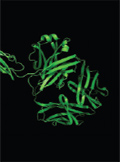The eLitMed.hu medical portal uses computer cookies for convenient operation. Detailed information can be found in the Cookie-policy.
Lege Artis Medicinae - 2013;23(09)
Content
[Prevention of infections in patients with absent or dysfunctional spleen: adaptation of international guidelines]
[Individuals with an absent or dysfunctional spleen are at increased risk of severe infection. The greatest risk of infection is within two years after splenectomy. A spectrum of infecting microorganisms may cause serious infections, especially in young or immunocompromised patients. The commonest pathogens are Streptococcus pneumoniae, Neisseria meningitidis and in some countries Haemophilus influenzae type b (Hib). The international guidelines for the prevention and treatment of infection in patients with an absent or dysfunctional spleen are inconsistent. Most of the evidence is obtained from expert committee reports or opinions and/or clinical experiences of respected authorities. This area in Hungary also represents an unmet need. Patients who have undergone surgical removal of the spleen and those with medical conditions that may predispose to functional hyposplenism must be educated about the danger of their condition, must be immunised and must be treated with prophylactic antibiotics according to national epidemiological and microbiological protocols. In Hungary we have an urgent need for a definite guideline for infection profilaxis of individuals with an absent or dysfunctional spleen. This paper is written by a vaccination consultant with the intention of raising awareness and to provide some assistence for physicians and their patients.]
[Lixisenatide: a new GLP-1-receptor agonist with mainly prandial effect for the treatment of patients with type 2 diabetes]
[Recently, lixisenatide, a new incretin mimetic GLP-1-receptor agonist with a mainly prandial effect has been registered for the treatment of patients with type 2 diabetes mellitus. The amino acid sequence of lixisenatide and that of human native GLP-1 is 50% identical. Due to its altered amino acid sequence and conformation, lixisenatide is resistant to inactivation by DPP-4. Lixisenatide is a specific agonist of GLP-1- receptors and its binding has a pharmacologic GLP-1-agonist effect. Lixisenatide is used subcutaneously, its normal daily dose is 1×20 μg. It is mostly used in combination with metformin, but it can be also used to supplement sulfanylurea or basal insulin therapy. Clinical efficiency of lixisenatide has been investigated in the phase-III GetGoal trials. In these trials, adequate glycaemic control and a marked decrease in postprandial blood glucose values were observed. During lixisenatide therapy, a decrease in body weight and no substantial increase in the risk of hypoglycaemia were observed, whereas transient gastrointestinal side effects might occur after initiation of treatment. Lixisenatide as an add-on treatment to basal insulin should be considered as a new treatment approach in the management of type 2 diabetes.]
[Letrozol therapy of postmenopausal women with early-stage breast carcinoma after four-six years of tamoxifen therapy: tolerability and quality of life]
[INTRODUCTION - In patients with hormone- dependent breast cancer, five-year postoperative tamoxifen therapy is a standard treatment approach. Continuing this therapy for more than five years can increase the risk of recurrence of the disease. It has been shown that treatment with the third-generation aromatase inhibitor letrozol after discontinuation of tamoxifen therapy significantly improves disease-free survival. It is important to assess whether the substantial decrease of estrogen level shows a correlation with the occurrence of unwanted events/side effects or with changes in the quality of life. PATIENTS AND METHOD - Between 2005 and 2009, 921 women (mean age 63 years, age 40-94 years) with early-stage breast carcinoma were treated with expanded adjuvant letrozol therapy following tamoxifen treatment. Of these patients, 541 received previous tamoxifen therapy for 4-6 years. We studied relapses and quality of life - measured by the SF-36 survey - during letrozol therapy in the latter patient group and the occurrence of unwanted events and side effects in all 921 patients. The patients were examined eight times and completed the survey four times. RESULTS - At the check-ups, relapses were recorded in case of 20 patients. Quality of life scores significantly increased in two main categories - physical and mental health -, and within these in three subcategories, whereas decreasing scores were not recorded in any categories. In 921 patient taking letrozol, 73 experienced unwanted events/side effects, of which nine were severe and three patient died. The two most common side effects were joint and bone pain (18 patients) and heat rash (12 patients). CONCLUSION - Extended adjuvant therapy with letrozol efficiently decreased the number of relapses and the number of patients continuing therapy. On the basis of the SF-36 survey the patients’ quality of life generaly improved. Letrozol therapy was well tolerated by most patients, which can have a favourable effect on the outcome of the therapy.]
[A novel rapid IL-6 release assay using blood mononuclear cells of patients with various forms of drug induced skin injuries]
[INTRODUCTION - IL-6 is a multifunctional cytokine with effects on the haematopoiesis on differentiation of T and B lymphocytes and on the regulation of both inflammatory and allergic reactions. The question arose whether this substance excreted by mononuclear cells could be used as a marker of allergy to drugs or not. Till now equivocal descriptions were lacking. METHOD - The preformed IL-6 present in the mononuclear cells released by any of four standard dilutions of pure substances upon 20 minutes incubation was determined from the supernatants by ELISA technique. In vivo patch, intradermal and provocation tests were carried out along with this assay (483 in vitro and 172 in vivo). RESULTS - Two different groups suspect for drug allergy (100 and 62 patients as well as their matching controls, 24 and 23 persons) were involved with these procedures. In some cases TNF-α, IL-2, IFN-γ and IL-4 was measured simultaneously by flow cytometric assay. Only TNF-α and IL-6 were present in the 20 min. supernatants. The comparisons with in vivo tests have confirmed that the amount of IL-6 release had not depended either on the clinical phenotype of allergy or on the structure of the tested drugs within the molecular mass range between 76-4000 Da. IL-6 released at the lowest or multiple concentrations of drugs coincided with more severe and widespread clinical forms. CONCLUSION - Based on the results we elaborated an in vitro method applicable clinically for detecting drug sensitisation and its differential diagnosis in patients with skin signs of drug sensitisation.]
[Drug use and death-seeking behaviour attitudes toward death among opiate users]
[Many times, behind mens’ fears there is the fear of death. Drug use can be defined as a kid of self destruction, so it is directly linked to attitudes toward death. In Hungary, suicide among young people is one of the leading causes of death, which is often associated with some kind of addiction or substance abuse. We can also say that drug use is an indirect way of “death search”, which prolongs the agony and the time of suffering. Drug-related death can be directly attributed to drug overdose. Intravenous drug use may cause a risk of infectious diseases (such as sharing needles/syringe/filter use) - HCV, AIDS, etc. Intravenous drug use is mostly - but not exclusively - characteristic to opiate users. Heroin’s mode of action is described as causing an intense feeling of euphoria and a way of feeling augmenting to stupor. Its addictive potential is very high, the degradation is visible and can be fatal. In this paper, we discuss previous observations on overdose that is the validity of harm reduction justified by former research, the possible predictors of overdose and the identification of the prevention area.]
1.
Clinical Neuroscience
Is there any difference in mortality rates of atrial fibrillation detected before or after ischemic stroke?2.
Clinical Neuroscience
Factors influencing the level of stigma in Parkinson’s disease in western Turkey3.
Clinical Neuroscience
Neuropathic pain and mood disorders in earthquake survivors with peripheral nerve injuries4.
Journal of Nursing Theory and Practice
[Correlations of Sarcopenia, Frailty, Falls and Social Isolation – A Literature Review in the Light of Swedish Statistics]5.
Clinical Neuroscience
[Comparison of pain intensity measurements among patients with low-back pain]1.
Clinical Neuroscience Proceedings
[A Magyar Stroke Társaság XVIII. Kongresszusa és a Magyar Neuroszonológiai Társaság XV. Konferenciája. Absztraktfüzet]2.
3.
Journal of Nursing Theory and Practice
[A selection of the entries submitted to the literary contest "Honorable mission: the joys and challenges of our profession" ]4.
Journal of Nursing Theory and Practice
[End of Life and Palliative Care of Newborns in the Nursing Context]5.
Journal of Nursing Theory and Practice
[Aspects of Occupational Health Nursing for Incurable Patients ]














